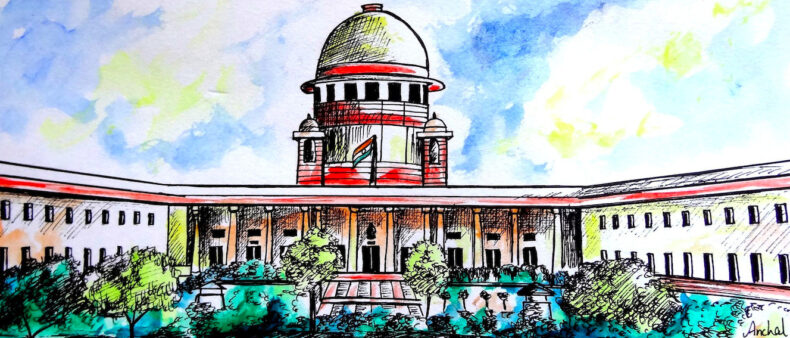Table of Contents
The Supreme Court of India is all set to introduce new roster management measures when it opens on July 3 this year after the summer vacation.

What are the new measures?
A new scientific system of case allocation is being introduced at the court. The roster system will now work keeping in mind the domain expertise of the sitting judges of the court.
Civil, criminal and service cases constitute the largest number of cases filed in the court. As such a larger number of judges have been assigned to the disposal of these cases. Multiple judge benches will hear criminal cases due to the large volume of such pending cases.
The Chief Justice of India along with two senior puisne judges will now preside over cases of Public Interest Litigation. This will ensure the speedy disposal of old cases.
Specialized benches will be constituted to deal with certain matters. This includes matters such as land acquisition, compensation, direct and indirect taxation, insolvency, corporate law and arbitration.
From July 3, a new process for listing and mentioning of cases before the Chief Justice of India will also be operationalized. Cases that are verified by Tuesday will automatically be listed for hearing on the coming Monday. Cases that get verified after Tuesday will be listed on the Friday of the next week.
A subject-wise roster has been prepared in which allocation will be done to fifteen different benches. The first bench is led by the Chief Justice of India Dhananjay Yashwant Chandrachud. Cases related to the following matters will be heard by his bench:
Indirect taxes, direct taxes, service matters, criminal appeals, company law, habeas corpus matters, arbitration, matters of appointment of constitutional authorities, admissions, armed forces, social justice matters, etc.
The second and third benches are led by Justices Sanjay Kishan Kaul and Sanjiv Khanna respectively. They can hear letter petitions and Public Interest Litigations depending upon assignment by the Chief Justice.
For urgent listing or listing on the same date, proformas accompanied by a letter of urgency will have to be submitted by 10.30 AM in the court.

Why are these changes being made?
The supreme court recently saw several retirements and appointments. There are also several impending retirements which led to these changes being brought. These changes are also intended to bring transparency.
What is roster management in the judiciary?
The roster system essentially refers to the case management system of the courts. It involves assigning different case categories to different judges
Why is roster management important?
This system ensures that case management and allocation are done smoothly. Benches are constituted that is assigned a particular case category to adjudicate. For example, a bench may be assigned indirect tax matters. This leads to the specialization of that bench in a particular category.
The Chief Justice of India is the master of the roster as they have the privilege to form benches to hear matters relating to law and to allocate cases.
The roster is prepared by the Supreme Court Registrar under the supervision and guidelines as stated by the Chief Justice. This duty of the registrar is subject to orders and directions of the Chief Justice.

What is the procedure for the allocation of cases?
After a case is filed in the top court, it is scrutinized by the Supreme Court registry. It categorises the case into one of the forty-seven broad categories of law such as taxation, criminal appeals, service matters etc. It then notifies the case to the existing benches. This is subject to the approval of the Chief Justice.












